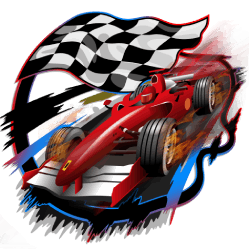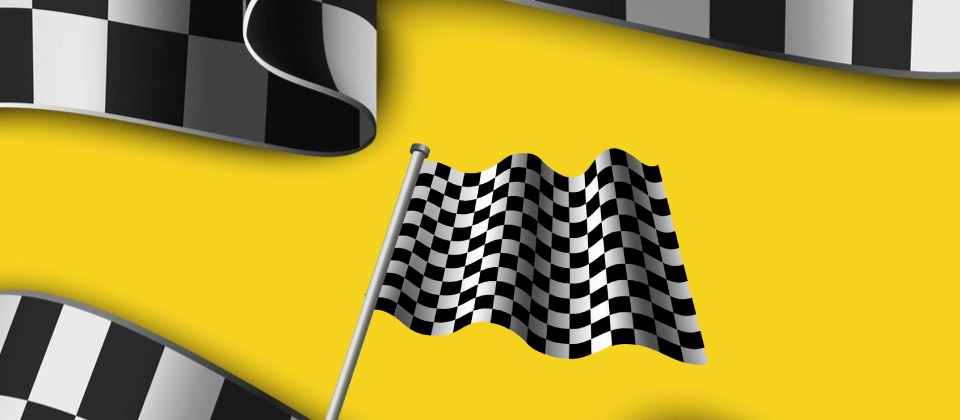The racing flag is more than a piece of fabric fluttering in the wind. It is a symbol of speed, passion, and victory, representing the spirit of motorsports. These flags flutter at the sidelines of the racetrack, each one conveying a unique message to the drivers. The vibrant colors and specific designs of each racing flag serve as an international language that transcends barriers of speech and nationality. This language, spoken on every racetrack, communicates safety, regulations, and important race progressions to drivers and spectators alike.
The History and Evolution of the Racing Flag
The racing flag has a rich and fascinating history, tracing back to the late 19th century. The first motor race took place in 1887 in Paris, and since then, the racing flag has been an integral part of the sport. The early racing flags were simple, with only a few colors to denote the start and end of the race. However, as motorsports evolved, so did the flags, eventually becoming more complex and nuanced.
Initially, the racing flag was merely a practical tool. A white flag signaled the start of the race, and a red one indicated its conclusion. As motorsports grew in complexity, additional flags were introduced to communicate various race situations. For example, the yellow flag was introduced to warn drivers of potential hazards on the track. The black flag was used to disqualify a driver, while the checkered flag, now universally recognized, signaled the end of the race.
The evolution of the racing flag mirrored the growth and development of motorsports. As races became more complex and dangerous, the need for efficient and effective communication became undeniable. This necessity birthed the diverse array of racing flags we see today, each with its unique meaning and purpose.
The Racing Flags Meaning in Motorsports
Understanding the racing flags meaning in motorsports is crucial for both drivers and spectators. Each flag carries a specific message, and misinterpreting a flag can have severe consequences on the race’s outcome.

The checkered flag, with its distinctive black and white squares, signals the end of the race or a practice session. It is a symbol of triumph and accomplishment, eagerly anticipated by every driver. The red flag is used to indicate a serious incident that requires the race to be stopped immediately. This could be due to a severe accident, adverse weather conditions, or other emergencies.
A yellow flag warns drivers of a hazard on the track, such as a crashed car or debris. It advises caution, with drivers required to reduce speed and refrain from overtaking. The blue flag is a courtesy flag, informing a driver that a faster competitor is approaching and they should allow them to pass. The black flag, a symbol of disqualification, is shown to a driver who has been penalized for breaking the rules.
How to Interpret Racing Flags Meaning During a Race
Drivers must be able to understand and respond to racing flags meaning message in a split second, often while traveling at high speeds. The correct interpretation of a flag can make the difference between victory and defeat, safety and danger.
When a yellow flag is waved, drivers must immediately reduce speed and prepare for potential hazards. They must also abstain from overtaking until they have passed the point of danger, marked by a green flag. A blue flag indicates that a faster driver is approaching from behind. The driver being overtaken should facilitate the pass by moving aside safely.
A red flag demands an immediate stop to the race. Drivers must slow down and return to the pits, following the instructions of the race officials. Upon sighting a black flag, the driver must return to the pits and report to the officials, usually indicating a penalty or disqualification.
The Art and Passion Behind Racing Flags
There is an undeniable art and passion behind racing flags. From their vibrant colors and distinct designs to their precise usage, each flag is a masterpiece in its own right. The flag bearers, often overlooked, play a significant role in the race, their hands orchestrating the rhythm of the race.
The artistry of racing flags extends beyond their physical appearance. It lies in their ability to communicate critical information quickly and effectively in a language understood universally. The passion is evident in the flag bearers who wave them with precision and enthusiasm, their actions directly influencing the course of the race.
The racing flag is a symbol of the passion that fuels motorsports. Each flag waved, and each message conveyed reflects the heart-pounding excitement of the race. The checkered flag, especially, embodies the ultimate passion: the desire for victory, the thrill of speed, the joy of achievement.
Impact of Racing Flags on the Outcome of Races

They guide the drivers, ensuring their safety and the race’s fair conduct. A single flag can change the course of a race, influencing strategies, determining positions, and sometimes, deciding the winner.
A well-timed yellow flag can benefit a trailing driver, allowing them to close the gap to the leading car under caution. A blue flag can disrupt the rhythm of a driver about to be lapped, potentially affecting their race outcome. Conversely, a black flag can spell doom for a driver, resulting in disqualification and the end of their race.
The checkered flag, the most anticipated of all, is the ultimate game-changer. It marks the end of the battle, crowning the victor and putting a full stop on all strategies and rivalries. In essence, racing flags add an element of unpredictability and excitement to the race, making each event a thrilling spectacle.
Conclusion
Unfurling the racing flag is to unveil a world of speed, passion, and victory. These flags are the unsung heroes of motorsports, silently guiding the drivers and shaping the races. The racing flag serves as a universal language, communicating critical information to drivers, teams, and spectators alike. As the world of motorsports continues to evolve, the racing flag will undoubtedly adapt, persisting as a symbol of the sport’s spirit and passion.

